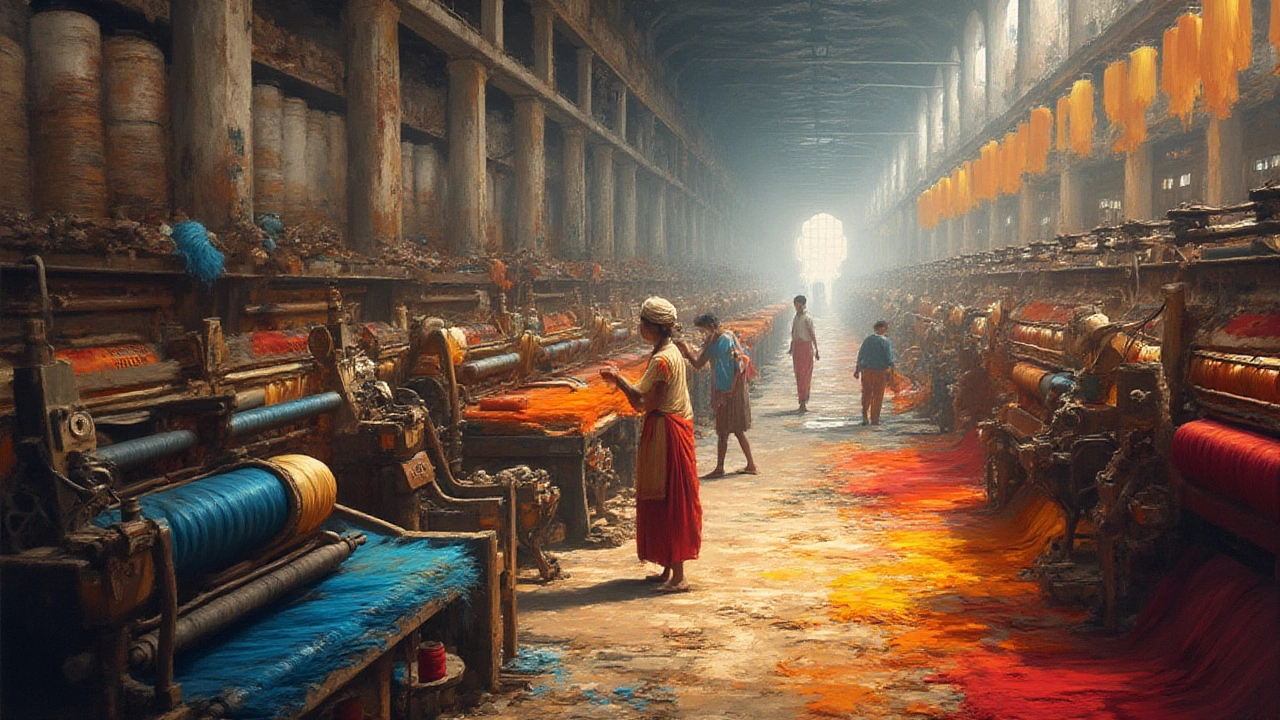Textile Mill Profitability in India
When talking about Textile mill profitability in India, the earnings left after covering raw material, labor, energy and overhead for a textile manufacturing unit. Also known as textile mill earnings, it reflects how well a mill turns yarn, fabric or finished garments into cash. Understanding this metric is crucial because it decides who can expand, invest in new tech, or survive price pressure. A major player in the profit picture is the Surat textile hub, the city with the highest concentration of mills, export‑oriented units and supporting logistics in India. Surat’s edge comes from cheap power, a skilled workforce and world‑class ports, which together shave thousands of rupees off each kilogram of fabric. Then there’s the broader Indian textile industry, a multi‑billion‑dollar sector covering cotton, synthetic, and blended fabrics across the nation. National policies, export duties and cotton price swings ripple through every mill’s bottom line. Profitability isn’t just about location. It also hinges on manufacturing profitability, the ability of a plant to generate a healthy margin by optimizing processes, reducing waste and adopting automation. When a mill upgrades to faster looms or uses AI‑driven quality control, the cost per unit drops, and margins rise. Finally, local manufacturing, producing textiles within India rather than importing components helps keep supply chains short, cuts freight costs and improves cash flow.
Key Factors Shaping Textile Mill Profitability
First, raw material cost is the biggest expense. Cotton prices can swing 30% year over year, and a mill that locks in forward contracts often enjoys steadier margins. Second, energy bills matter. India’s power tariffs are among the highest for manufacturers, so mills that install solar panels or negotiate captive power agreements see a direct boost to their profit equation. Third, labor efficiency decides how much output you get from each worker hour. Training programs and incentive schemes turn a 20‑person line into a high‑output unit. Export demand is another driver. When global buyers look for “Made in India” fabrics, mills with compliance certifications (like ISO and OEKO‑Tex) command better prices. Surat’s export‑focused units illustrate this: they ship to Europe and the US, earning foreign exchange that offsets domestic cost pressure. Domestic sales, meanwhile, depend on fashion trends and retail channels. A mill that can switch quickly between high‑volume basics and premium designer fabrics captures both volume and margin. Technology adoption creates a feedback loop. Installing digital MES (Manufacturing Execution Systems) provides real‑time data on yarn breakage, machine downtime, and energy consumption. That data lets managers pinpoint loss points, cut waste, and push the profit line upward. The same data helps negotiate better terms with suppliers because you can prove exact consumption patterns. Policy environment cannot be ignored. Recent incentives for “Make in India” give tax breaks to mills that increase capital investment in certain states. Meanwhile, the ban on single‑use plastics forces many garment manufacturers to shift to reusable packaging, which initially adds cost but eventually lowers recurring expenses. Understanding how these policies intersect with a mill’s cost structure is part of the profitability puzzle. Lastly, financial discipline matters. Keeping a tight eye on working capital—especially inventory turnover—prevents cash flow squeezes. Mills that use just‑in‑time inventory reduce storage costs and free up capital for upgrades. Combining this with disciplined pricing, where you adjust rates based on raw material swings, safeguards margins. All these pieces—location advantages like Surat, industry‑wide trends, process efficiency, export dynamics, tech adoption, policy incentives, and financial stewardship—work together to determine textile mill profitability India. Below you’ll find a curated set of articles that dive deeper into each of these areas, from real‑world case studies in Surat to step‑by‑step guides on boosting manufacturing profitability. Explore the collection to see how you can apply these insights to your own mill or textile business.

Thinking about launching a textile mill in India? Learn about revenue potential, risks, local challenges, and real costs. Deep dive into India's ever-growing textile industry. (Read More)








